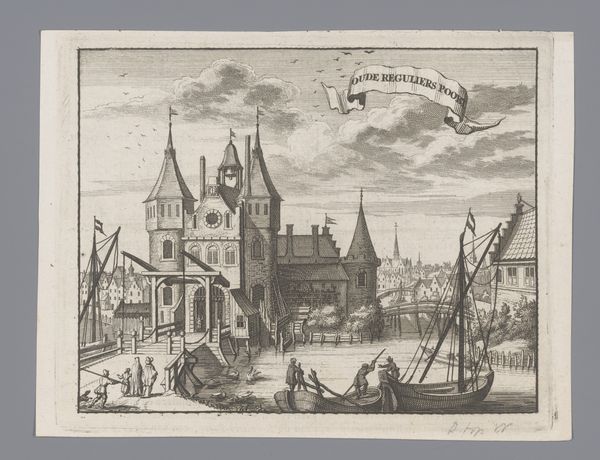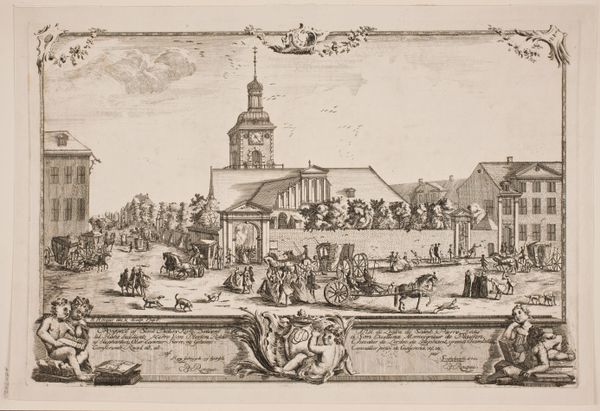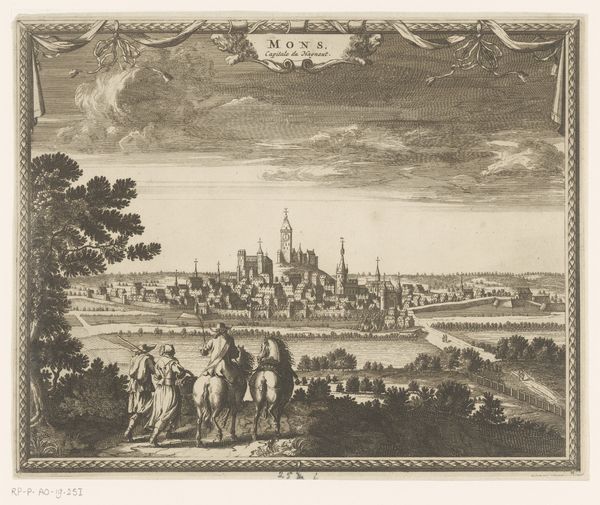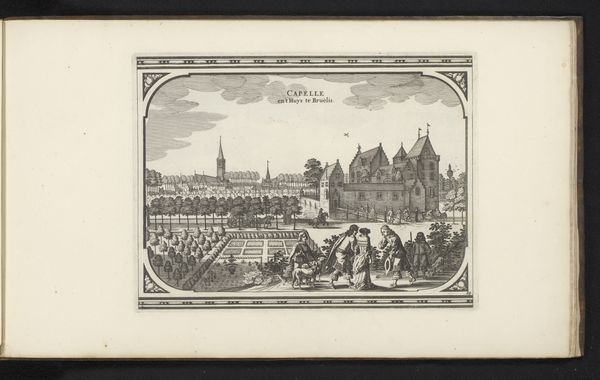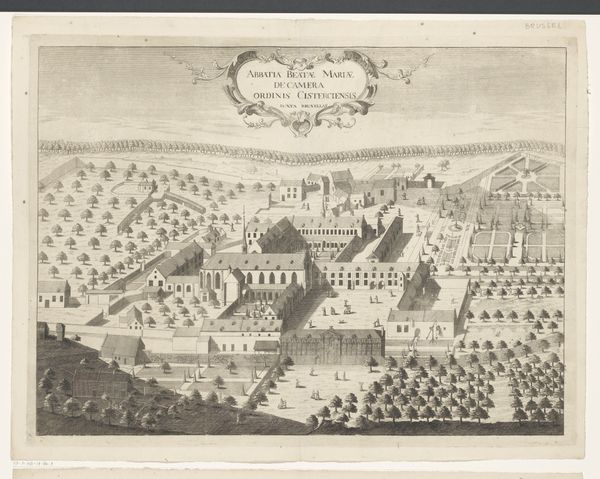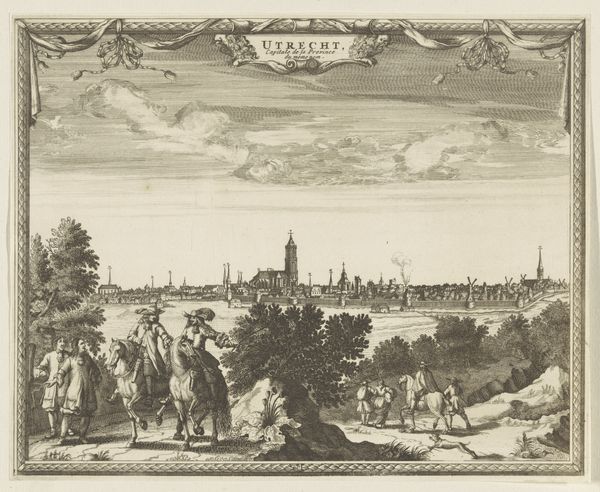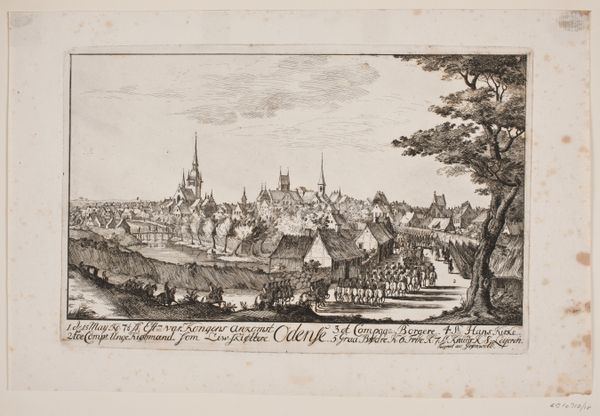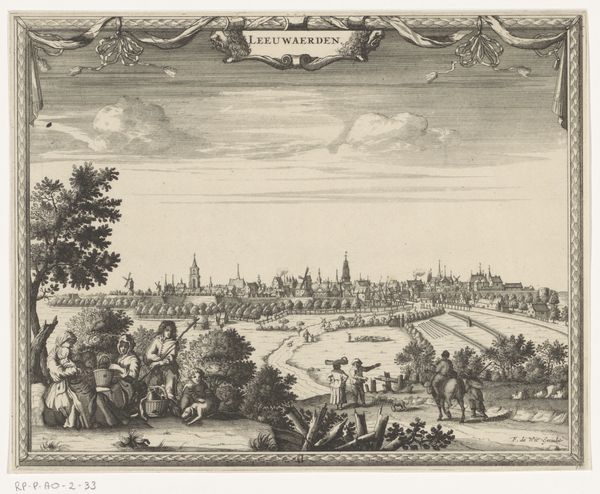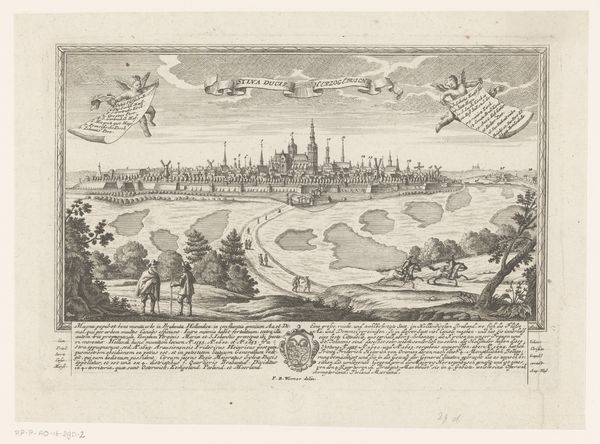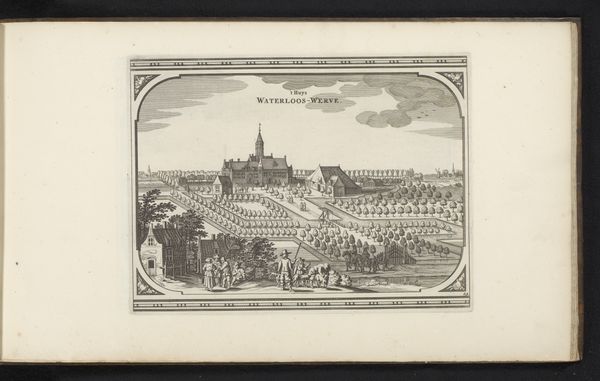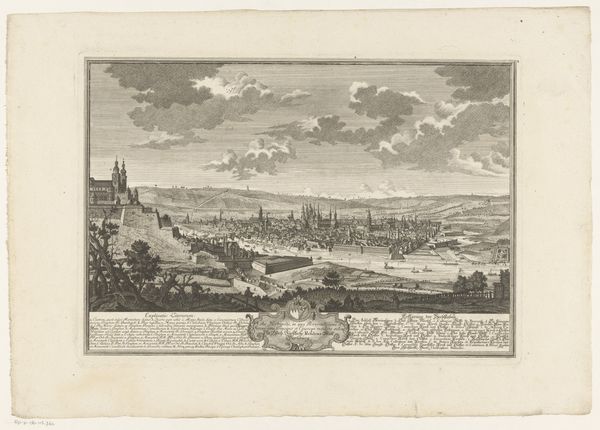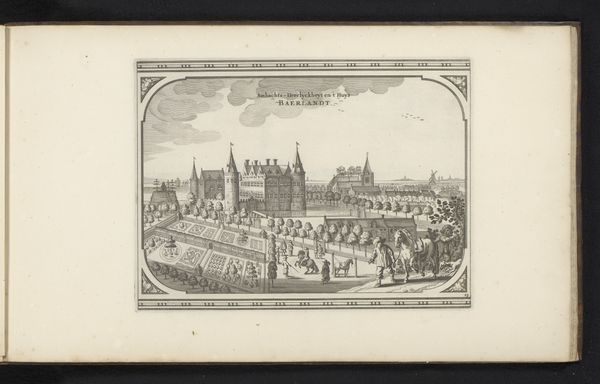
print, engraving
#
dutch-golden-age
# print
#
landscape
#
figuration
#
cityscape
#
engraving
Dimensions: height 215 mm, width 286 mm
Copyright: Rijks Museum: Open Domain
Curator: Welcome. Before us is "View of Kapelle and Castle Bruelis," an engraving made in 1657 by Pieter Hendricksz. Schut. It's a fascinating look at a Dutch Golden Age landscape. Editor: Immediately striking is the formality, almost a diagrammatic quality. The use of line creates an image of meticulous order. There's a sense of almost suffocating control, perhaps? Curator: The period was certainly about order, but also about displaying status. We see that in the rigid geometric arrangement of the gardens and grounds, mirroring the rigid social hierarchies of the time. Notice, too, the placement of the church steeple in contrast with the castle, subtly hinting at religious and secular powers. Editor: Yes, but consider the engraving technique. Schut uses varied line weights and densities to render depth, with the darker foreground drawing us in. It’s not just about social structures; it’s about spatial organization. I am intrigued by the two figures that he places off-center to balance the tower of the castle on the right. Curator: Absolutely, but their presence is important for other reasons too. By including these figures, who appear to be of the merchant class, the artwork creates a narrative—who has access, who inhabits and profits from this landscape. Who does this “order” truly benefit? Editor: Perhaps. But look at the dogs in the engraving and the way Schut plays with curvilinear design. Are they domestic comforts, reflections of elite ownership of animals, a sign of dominion over nature through pets, or perhaps a touch of lightheartedness in an otherwise somewhat austere design? Curator: A valuable point. Their inclusion complicates our interpretation and brings a domestic intimacy to the rigid landscape. The gaze shifts from architecture to domesticity and social practices. It is a scene teeming with information regarding power, domestic life and ownership. Editor: Seeing it like this encourages further thought and interpretation. I find myself pondering more broadly on technique in order to extract themes relating to gender, race and identity. Curator: Indeed. Art reveals as much about us, the viewers, as it does about the moment it was created.
Comments
No comments
Be the first to comment and join the conversation on the ultimate creative platform.
